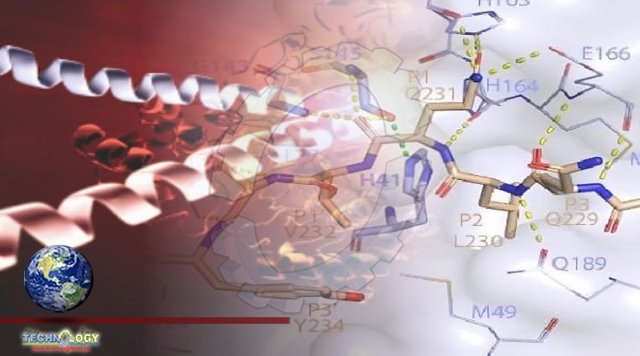Powerful X-rays from the SLAC synchrotron show that the fundamental wiring of our immune system seems to be no match for the vicious SARS-CoV-2 protein.

Scientists have examined the SARS-CoV-2 virus in great depth over the last two years, laying the foundation for COVID-19 vaccines and antiviral treatments. Researchers at the Department of Energy’s SLAC National Accelerator Laboratory have now seen one of the virus’s most crucial interactions for the first time, which might aid in the development of more precise treatments. The researchers captured the moment when a viral protein called Mpro slashes a protective protein called NEMO in an infected individual. Without NEMO, the immune system is slower to react to growing viral loads or new infections. Understanding how Mpro targets NEMO at the molecular level may provide new treatment strategies. Researchers exposed crystalline samples of the protein complex to intense X-rays from SLAC’s Stanford Synchrotron Radiation Lightsource (SSRL) to see how Mpro cuts NEMO. The protein samples were hit by X-rays, which showed what Mpro looks like when it disables NEMO’s primary function of facilitating immune system communication.
We saw that the virus protein cuts through NEMO as easily as sharp scissors through thin paper,” said co-senior author Soichi Wakatsuki, professor at SLAC and Stanford. “Imagine the bad things that happen when good proteins in our bodies start getting cut into pieces.” The images from SSRL provide the first structure of SARS-CoV-2 Mpro bound to a human protein and show the precise location of NEMO’s cut. “If you can block the sites where Mpro binds to NEMO, you can stop this cut from happening over and over,” SSRL lead scientist and co-author Irimpan Mathews said. “Stopping Mpro could slow down how fast the virus takes over a body. Solving the crystal structure revealed Mpro’s binding sites and was one of the first steps to stopping the protein.” The research team from SLAC, DOE’s Oak Ridge National Laboratory, and other institutions recently published their results in the journal Nature Communications.
Source: This news is originally published by scitechdaily
